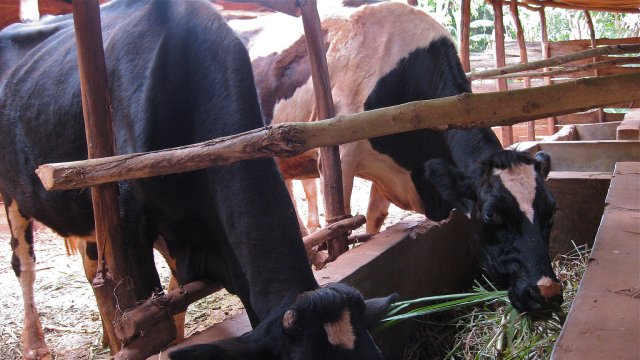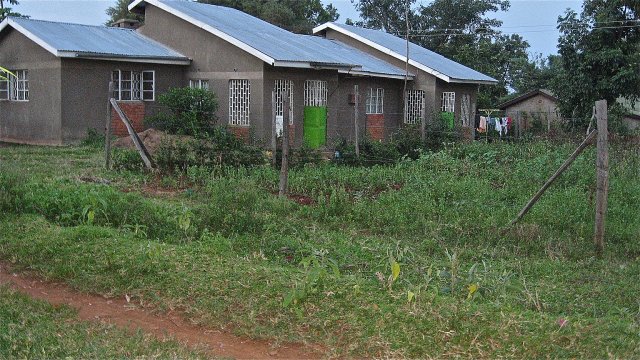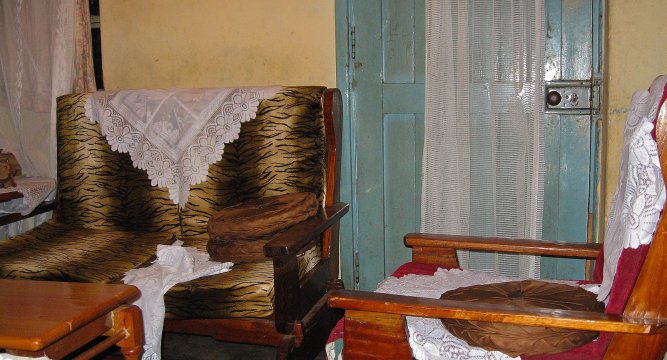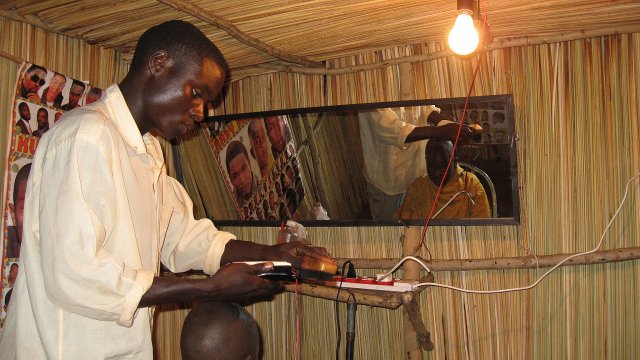|
John Tyman's Cultures in Context Series AFRICAN HABITATS : FOREST, GRASSLAND AND SLUM Studies of the Maasai, the Luhya, and Nairobi's Urban Fringe |
|
|
|
|
|
John Tyman's Cultures in Context Series AFRICAN HABITATS : FOREST, GRASSLAND AND SLUM Studies of the Maasai, the Luhya, and Nairobi's Urban Fringe |
|
|
|
|
 |
| 295. Cattle have long had to forage along field margins but much of this land is now cropped, so farmers practice “zero grazing” -- in which cows are fed in miniature feed lots. |
 |
| 296. Additional parcels of land, however small, have been saved by the substitution of barbed wire fences for traditional hedgerows, to exclude cattle from vegetable gardens and family compounds. |
 |
| 298. And, though rooms are still small by Western standards, the prosperity of their owners is reflected in more expensive furniture. |
 |
| 299. The provision of electricity to many rural communities -- used here by the barber at the Kakunga Shopping Centre -- has also led to a demand for a new range of electronic goods. |
![]()
Text, photos and recordings
by John Tyman
Intended for Educational Use
Only.
Contact Dr. John Tyman at
johntyman2@gmail.com
for more information regarding
licensing.
![]()
www.hillmanweb.com
Photo processing, Web page layout,
formatting and hosting by
William
Hillman ~ Brandon, Manitoba ~ Canada